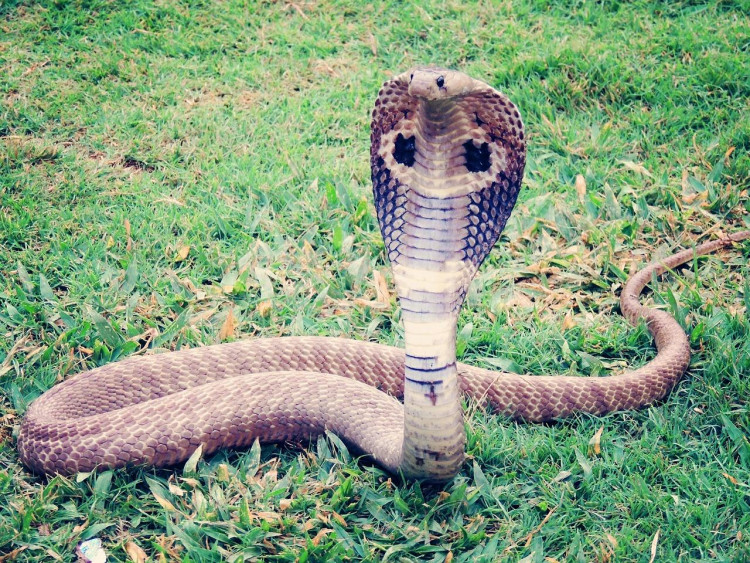The ubiquitous and popular wet markets of Asia, where people can buy everything from spices to snakes, might be the culprit for helping the coronavirus make the jump from reptiles to humans.
The many-banded Chinese cobra or "krait" may be the original source of the newly-discovered virus that has sparked a pandemic of a deadly infectious respiratory sickness in China this year.
A second study published on Wednesday in the Journal of Medical Virology points to snakes as the one causing the paranoia and deaths.
The medical journal said that in order to determine the virus' "potential reservoir," authorities have carried out a complex sequence analysis and comparison. Based on the findings from these analysis, "snakes are the most probable wildlife animal reservoir."
The sickness was first made public in late December last year, in central China's Wuhan city, and has been rapidly spreading. Since then, sick travelers from the city have infected people in China and other countries, including the United States.
Chinese scientists have identified the genetic code of the virus and determined the pathogen causing the outbreak is a new type of coronavirus.
The virus is found in the same category of viruses like the dreaded severe acute respiratory syndrome coronavirus (SARS-CoV) and Middle East respiratory syndrome coronavirus (MERS-CoV), both of which have caused serious outbreaks in the last 20 years.
Both MERS and SARS are categorized as zoonotic viral diseases, which means the first infected patients acquired these viruses straight from animals.
This was feasible because while the virus stayed inside an animal, it had genetically mutated that allowed it to infect and multiply inside its human host. The World Health Organization calls this new virus as 2019-nCoV.
Coronaviruses are spread through the air and mainly infect the upper respiratory and gastrointestinal tract of birds and mammals. Most viruses cause relatively mild symptoms, but a few can be life-threatening.
Unfortunately, there is no approved vaccine or antiviral treatment yet for 2019-nCoV, and scientists are facing a blank wall on how easily the coronavirus can be transmitted from human to human -- and in this case -- from snakes to humans.
This scenario makes a lot of sense, primarily because both the Chinese cobra and Chinese krait hunt and eat bats. Secondly, these reptiles are also sold in Asian wet markets, and are sometimes cooked as food, or used in traditional medicine.
Thus, this route makes a convincing case for a reasonable chain of events, where the virus leapt from bats to snakes -- and then from snakes to humans. However, how the coronavirus could adapt to both cold-blooded and warm-blooded hosts remains a mystery.
According to Peking University School of Basic Medical Sciences immunogy professor Wang Yuedan, preference for fresh animal meat that are not properly quarantined or come from the wild "does make China vulnerable to the risk of a new virus pandemic."
China's Center for Disease Control and Prevention director Gao Fu said that scientists believe the coronavirus likely originated from "wild animals at the seafood market" although the specific source remains unknown.
Meanwhile, 830 cases of patients inflicted with the virus has been confirmed in China as of January 23. Based on update by the National Health Commission on Friday, 25 have already died from the new coronavirus.
The World Health Organization has tallied the figure at 18, following confirmation of deaths outside Hubei province, which some experts believe is where the pandemic broke out.
In Japan, the ministry of health confirmed a second case of the outbreak, Friday. Authorities confirmed the infection in a man in his 40s and a resident of Wuhan. Health officials said the man, who travelled to Japan on Sunday, is currently in a hospital for a series of examinations.






